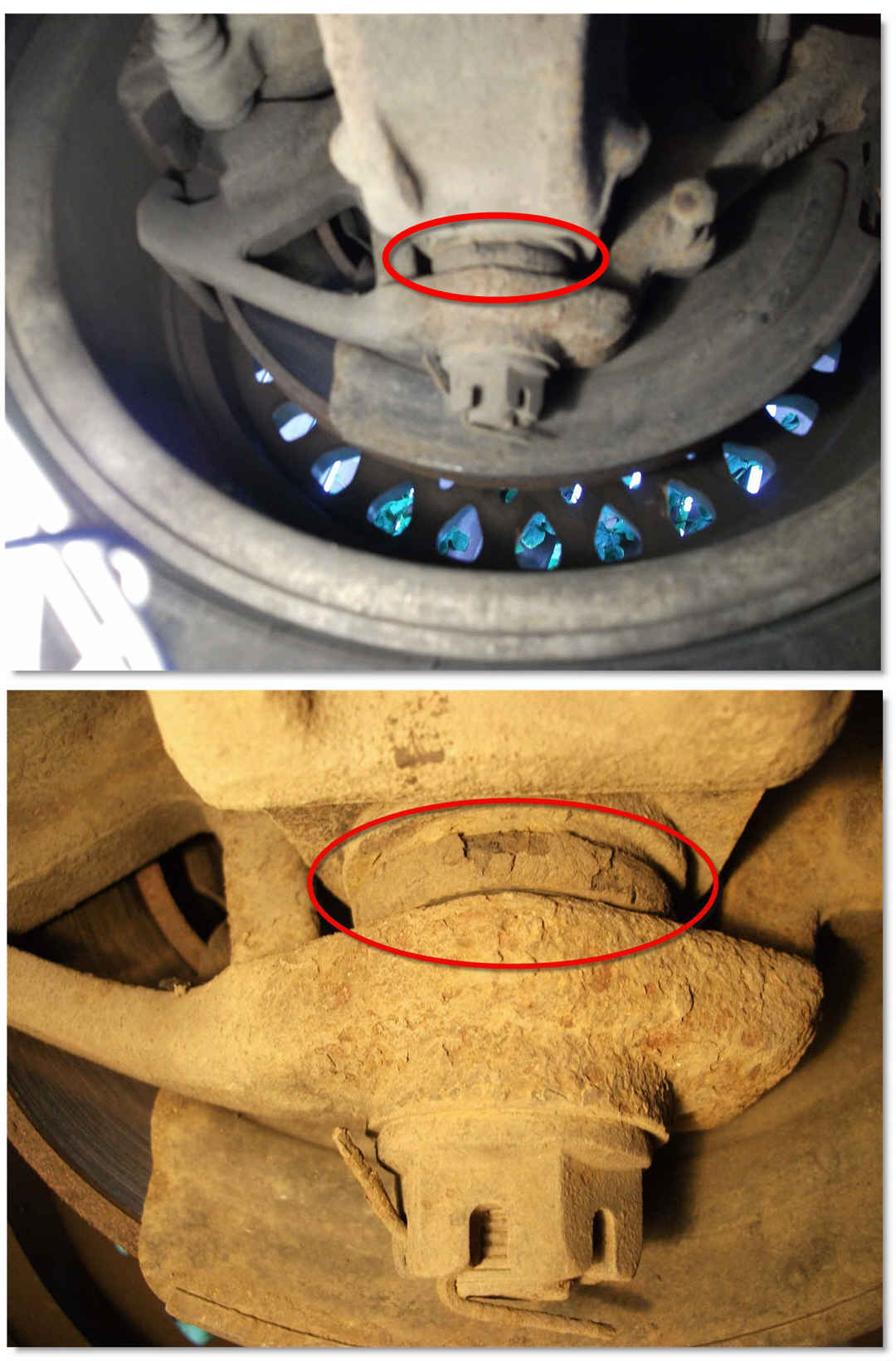All you need is stuff to remove the wheel and brake caliper (what year?), a 13mm 12 point socket, a breaker bar, a 1/2 to 3/8 adapter if its a 3/8 drive 13mm 12pt socket, a rented or harbor freight balljoint press and the 4wd adapter cup set for it, the sockets to fit the upper and lower alljoint nuts (I want to say 7/8 for the upper and 30mm or similar for the lower, but measure/check), a 3lb hammer, and either a large nut and bolt or a 1/2 extension bar to separate the hub from the knuckle. Oh, and a big box wrench to fit the balljoint press, iirc a 7/8 fits.
Jack it up, take the wheel off. You want the wheels pointing straight ahead, maybe slightly away from the side you're working on but not much.
Remove the caliper. Depending on year this will be a 12mm or 13mm hex bolt, in some older years it is an allen key. Slide the rotor off.
Now the worst part. Unscrew the 3 12pt 13mm bolts holding the hub in. One over the ujoint, one each slightly below and in front of / behind it. If they are badly rusted, make sure you scrub most of the rust off and get the socket all the way on. This WILL require a breaker bar.
Turn the steering till you can fit your 1/2 drive extension between the ujoint ears and cross, or set your large bolt and nut up between the inner C by the axle tube and the ujoint ear, then turn the wheel slightly in the direction that will try to compress the bolt or extension bar. This will force the hub out of the knuckle with no fuss. Make sure not to knock the jeep off the jack/jackstand in the process.
Remove the cotter pins from both balljoints if possible, spray the nuts with penetrating lube, and unscrew the nuts. The upper one is easiest to get at through the hole the hub bearing just came out of.
Once they are off, put the lower back on about a turn by hand. NOT to the point that it is hard to turn, it should thread on freely or your life will be hell in 5 minutes!
Get your big hammer out and whack the steerin knuckle on the side, right where the balljoint stud passes through it. Repeat with increasing levels of violence until it pops loose. You'll need to do this on both the upper and lower most likely.
The knuckle should drop down a bit when both balljoint tapers pop loose. If you didn't put the lower nut on too tight 5 minutes ago, unthread it by hand and the knuckle will drop off, held only by the steering linkage. If you did put it on too tight... have fun!
Now you can actually get to the part you're after. Grab your balljoint press, 4wd adapter set, 7/8 box wrench, and big hammer. I always forget which one comes out first, but you need to at least get the lower out of course. One you have figured out the appropriate set of cups, angled cups, press drive pins, and sockets for this, get the press on there and crank it down pretty tight. Remember that the lower balljoint presses out downwards and in upwards so you don't try to push it further in. So get the press as tight as you can with the box wrench and one hand, then whack the inner c right where the balljoint presses into it with your big hammer. Repeat with increasing violence until you hear a bit of a crack/pop and the balljoint should pop out a few mm. Now tighten the press down as much as you can with one hand again... repeat till the balljoint falls out.
Installation is the reverse of removal, except you curse at different points. I would suggest replacing the upper as well "while you're in there" - and I always forget which goes in first, it matters, think it through and make sure you don't put the wrong one in first. The upper balljoint presses in from the top and out from the bottom, opposite from the lower.
Edit: I missed that you said 1990 XJ, sorry. You're going to need an allen / hex key driver of some size to take the calipers off, I forget what size and if it is metric or SAE.


